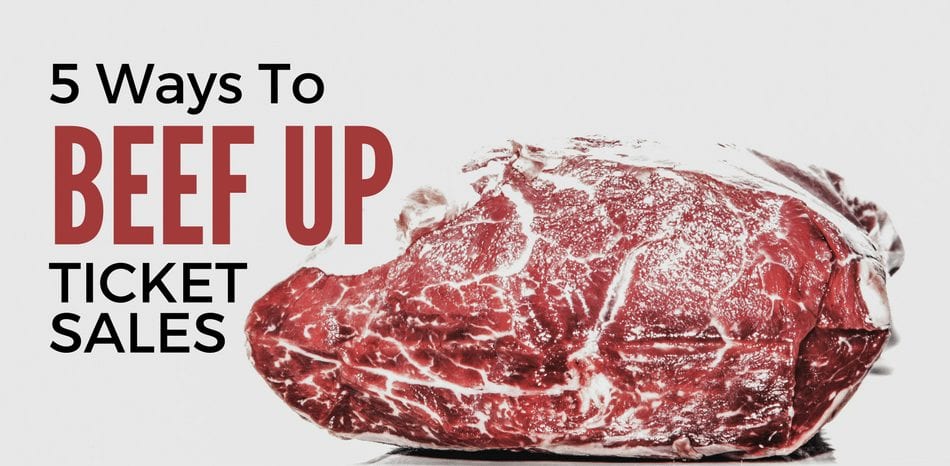Imagine your toil for months to put on an event.
You scout for talent, negotiate prices and book venues, build sets, stress about budgets and dress rehearsals, you chase deadlines and put out fires, and now it’s opening night, the moment of truth… Only you have a problem: nobody’s showing up.
It’s every event organizer’s worst fear.
It also actually happens a lot more often than you think, and booking once-famous acts alone won’t make you immune to it.
This nightmare scenario is also what makes the event marketer’s job exceptionally hard. Events already pose big logistical challenges, and after all the preparation and hard work the event is over in just a few days. So you only get one shot to sell enough tickets.
Before you spend another moment wracking your head for ideas on how to go viral, we put together an event marketing framework for you. Our hope is that it makes your brainstorming sessions more focused, more productive, and ultimately more profitable.
If you only take away one thing from this post, it should be this: to fill your venue and put on a successful event, make generating exposure your first priority, and then optimize for what fans want to see and hear.
Exposure: The Golden-Egg-Laying Goose of Event Marketing (That You Should Pay For)
Let’s start with why exposure is so important. It’s crucial for us to understand the underlying principle before we dive into specific tactics.
You may think the answer is obvious (it’s not).
In fact, it’s so non-obvious that your advertising budget is probably a fraction of what it should be.
Brands are built through advertising, and that includes event brands. Take the Super Bowl as an example. Every year, marketers are willing to pay more for these ad placements, even when digital advertising is displacing traditional ads. Big companies do this because they know they will see great ROI from the exposure.
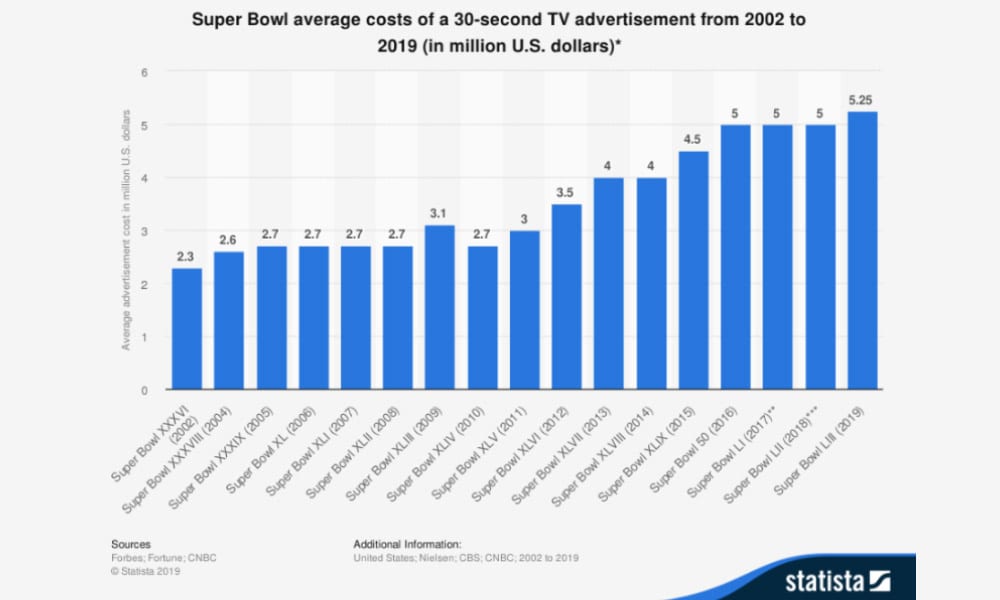
Of course, sometimes you can build your brand through word of mouth alone — an incredibly effective event marketing channel. But as effective as it is, it’s equally as hard to pull off, requires your event to be truly exceptional, and gives you absolutely no starting point for getting the word out in the first place.
So, why does simply paying for exposure (assuming you can’t get it any other way) make so much sense?
Exposure is event marketer speak for “top of the funnel.” In other words, we can roughly define exposure as the process of getting your brand — your specific event — in front of potential fans. It’s the first of many steps that eventually lead to a ticket purchase.
Ask any marketer, any salesperson, any CEO who has been in business for more than a minute, and they will tell you unanimously: your lead funnel is the lifeblood of your business. Exposure gives you leads, and leads create opportunities. Some of those opportunities result in sales.
The Time-Tested Principles Of Your Marketing Funnel
Even when we’re talking about selling tickets at scale, using modern tools and modern channels, age-old sales and marketing principles still apply. Remember Alec Baldwin’s pompous character in Glengarry Glen Ross, lecturing salespeople about Attention, Interest, Desire, Action (AIDA)?

Sales cultures have (hopefully) changed, but the underlying business principles remain the same — absolutely nothing happens and nothing can happen until you garner enough attention (or in our case, exposure).
And while we’re talking principles, let’s recall another one from the marketing school days:
If buying exposure costs you less than what you make back in sales from that exposure, you’ve hit an advertising goldmine, and should keep paying for exposure for as long as you keep making your money back.
“Alright,” you might say, “that all sounds great in theory, but how does it actually translate to getting more people to come to our event?”
Exposure results in more event attendees because its effects “trickle down” to other marketing efforts. What do we mean by that?
Exposure’s “Trickle Down” Effect and How It Impacts Event Marketers
While principles don’t change, every industry brings its own nuances. When it comes to event promotion, focusing on exposure delivers many powerful outcomes.
Imagine you make an ad promoting your event, and pour some of your budget into Facebook advertising. Here’s what you can expect from actively focusing on maximizing exposure first:
- More ticket sales, as the top of your marketing funnel gets bigger, and as more people naturally travel down to the bottom of your funnel.
- Better sponsorship opportunities, as the word spreads and different stakeholders learn about your brand.
- Exposure amplifying through word of mouth, as your ads and promotions get shared among friend groups.
- Easier time attracting great talent, as the credibility of your event grows.
- Growth of your subscriber and/or follower list, since even some of those who don’t buy tickets today still want to stay informed about future events.
And that’s just the surface.
Compare that to allocating your resources to something closer to the bottom of the funnel. Perhaps your ticket check-out page is overdue for a redesign, so you spend some money on a new website.
The result?
- More ticket sales through online check-out, as more people have a smoother website experience (maybe).
Annnnnd… that’s it.
But wait — can you even guarantee that single result?
Actually, not 100%. Because if someone really wants tickets to your event, a bad user experience is not going to stop them (especially when they only have to tolerate it for a few minutes at most).
Yet if they never even hear that one of their favourite bands will play at your event, of course there’s no chance they will ever buy tickets. And that’s what makes focusing on exposure so powerful for event marketers.
Now that we’ve gone over the why, let’s take a look at the how.
The Information Hierarchy: What to Include In Your Promos To Make Fans Notice Them
When you start your efforts to maximize event exposure, you will need a framework to drive your focus.
Like all advertising, event promotion and event marketing are equal parts art and science. We’ll leave the art to you, but we’ve done some of the science so you don’t have to. Based on data gathered by Intellitix, there’s a clear Hierarchy of Information that event promoters should keep in mind with every campaign. This is what matters most to fans:
Most Important
1. Lineup, who is performing
2. Atmosphere and environment of the venue
Somewhat Important
3. Location of event
4. Price
Least Important
5. When it is/timing (tied with price)
6. Safety
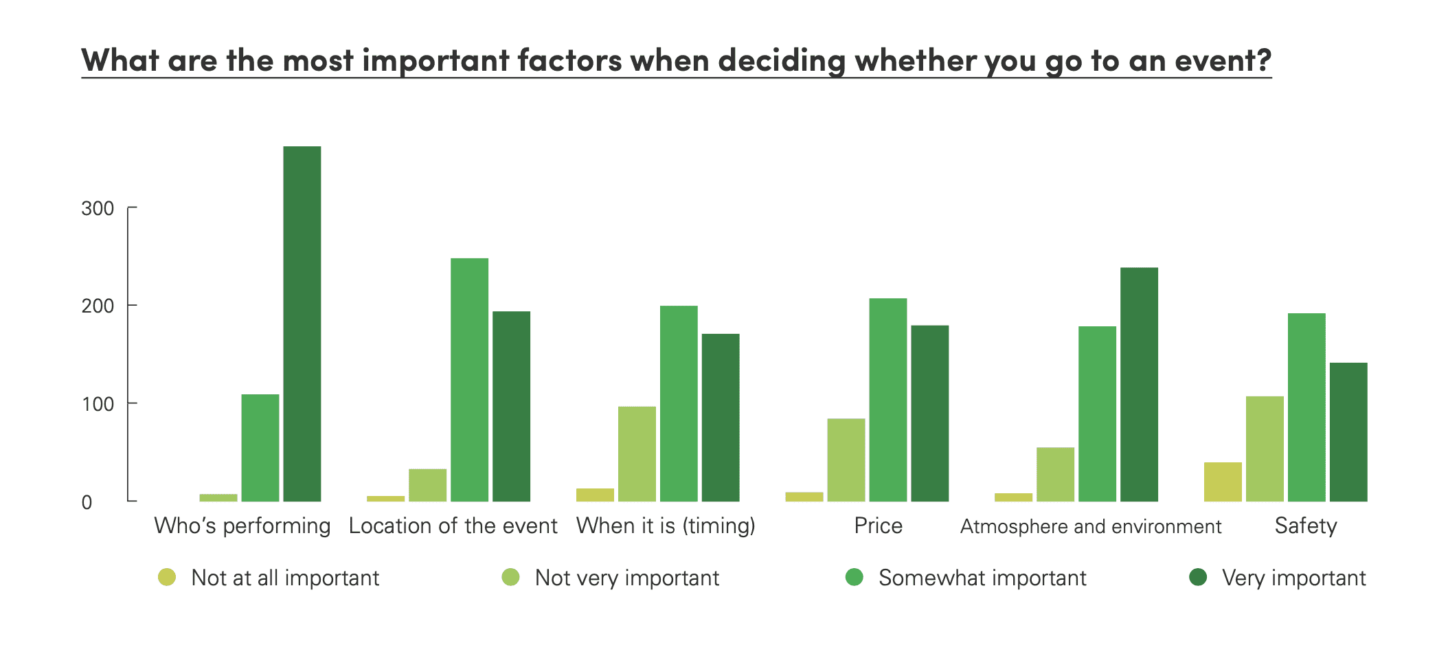
(Source: Intellitix State of Live Report)
Headliner exposure is extremely important.
You should use the above information as a framework for prioritizing the marketing messages about your event. Some of this is very intuitive. For example, you should put your headliners front and center in any top-of-funnel ad featuring your event.
Other data supports this as well. Out of our surveyed fans, 61% said better line-ups would make them attend more events. There is a very clear symbiotic relationship between headliners and event organizers, so your lineup should be the flagship announcement that the entire exposure strategy revolves around. After all, almost 50% of your fans buy tickets when the lineup is announced.
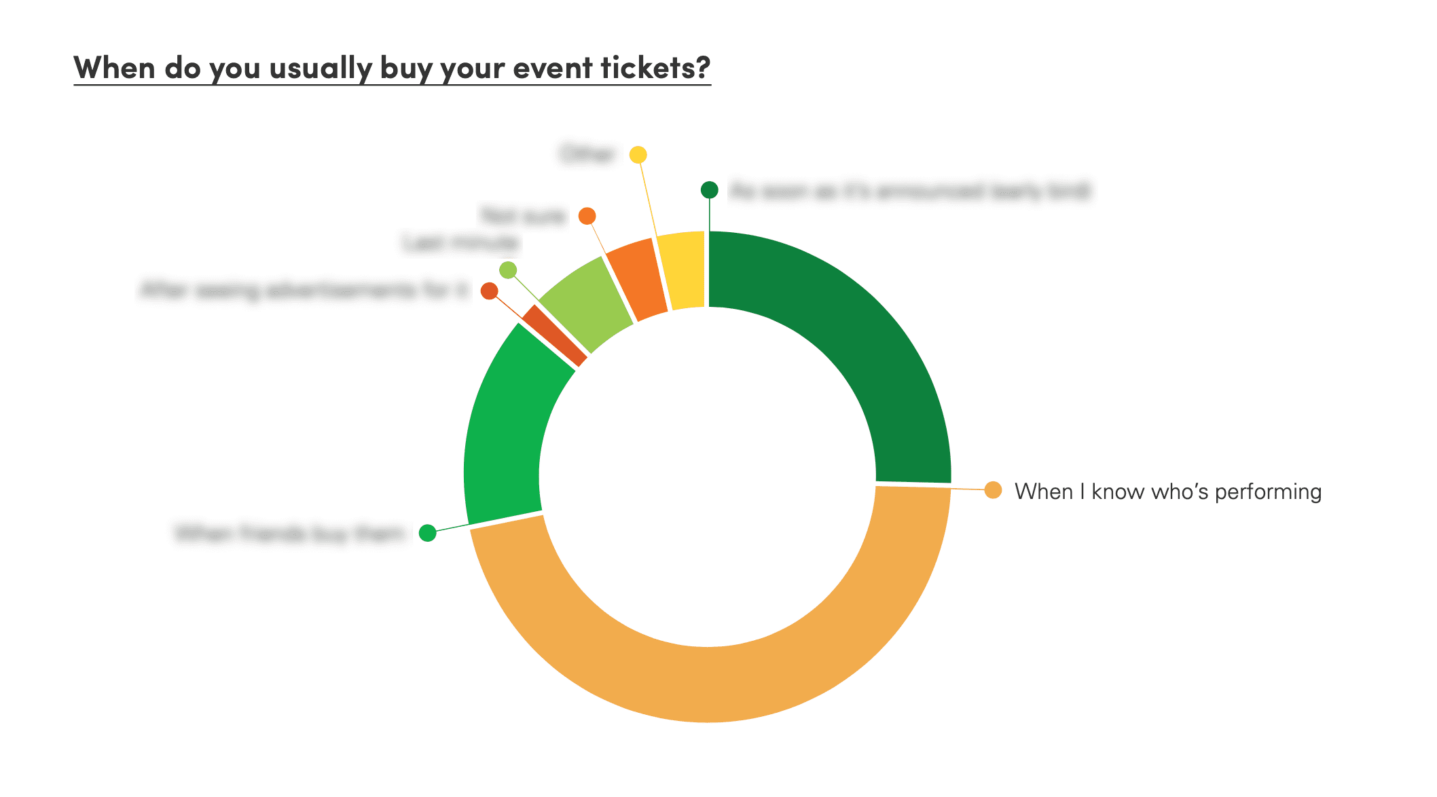
(Get full access to the data for FREE here)
Beyond headliners, atmosphere and price draw a lot of attention and will make a big impact.
Other findings from our data suggest there’s still a lot more to event promotion than just headliners. For instance, a great event atmosphere is almost equally as attractive to potential attendees as the lineup. This means being strategic (as opposed to merely attention-grabbing) about the visuals of your ad collateral is almost as equally important as prominently mentioning the headliner in your copy.
Apart from your lineup or atmosphere, price becomes important for moving your fans through the middle of your funnel. In fact, pretty much 100% of fans feel that ticket prices hold them back from attending even more events.
Registrations help you amplify your efforts.
In addition to optimizing for direct ticket sales, don’t ignore optimizing for non-sales registrations. While they don’t translate to immediate revenue, registrations help you build an audience and make your event exposure efforts more impactful long-term. The top 3 types of content that drive registrations include social content, photo, and graphic content, and video content.
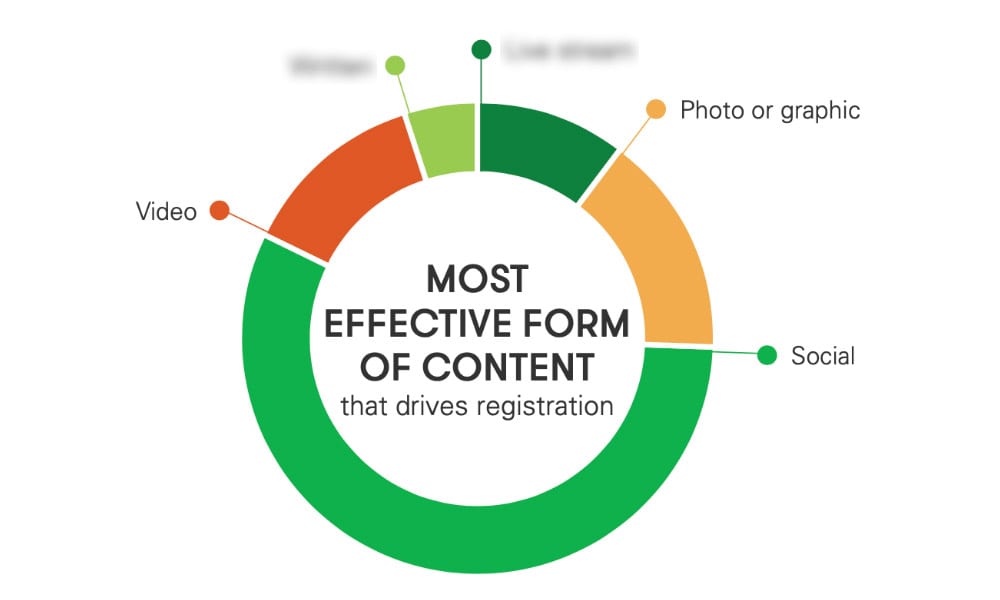
(Source: Intellitix State of Live Report)
Focus on these three formats for maximum registration results, and for building a lifetime audience.
Starting Points for Visibility and Exposure Optimization
Now that you have some familiarity with high-level approaches to exposure, here are some starting points for truly optimizing your exposure.
Getting the most out of your lineup announcement.
Since announcing your lineup will significantly amplify your exposure, you should structure your marketing plans and sequences around it. Make sure to capture your fan emails or tag them with tracking pixels, and tease your lineup announcement in advance. And once you reveal the lineup, keep it as the focal message in the rest of your campaigns.
Advertising to “squads”.
Our data shows that 67% of your fans hear about new events from their friends, and most will attend in groups. When we also recall that many fans have high price sensitivity, a new opportunity to structure offers reveals itself. You can try creating a “bring the squad” promos that give discounts to groups of fans. This will not only help you bring in sales but amplify your word of mouth as well.
Optimizing your ads.
Apart from strategic direction, also keep in mind the execution of your promotions for effective event marketing. Doing a careful study of applied psychology does not require a master’s degree, but will pay off in droves when executing on your ads. Make sure your creatives are doing the serious heavy lifting so any paid exposure efforts bring maximum returns.
That’s quite a lot to start with, but as long as you keep the exposure framework in the back of your mind, you should be on the right track with a solid event marketing framework and on your way to blow-out ticket sales. For more tips and guides, grab our Free State of Live Report, and subscribe to the Intellitix blog.

